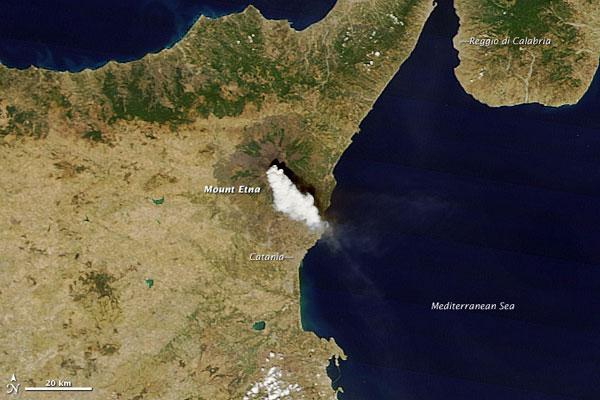
Mt. Etna's Violent Bursts Spotted from Space

Throughout 2011, activity at Sicily's Mount Etna has been characterized by paroxysms: short, violent bursts of activity.
Each event has included volcanic tremors, ash emissions, and lava flows centered around the New Southeast Crater, just below the summit.
On Aug. 12, Etna had its tenth paroxysm of the year, captured in this natural-color image from NASA's Terra satellite. Etna spewed a thick white plume of gas and ash to the southeast, towards the nearby city of Catania. The ash cloud was produced by vigorous lava fountaining at the New Southeast Crater.
The Toulouse Volcanic Ash Advisory Center estimated ash emissions reached an altitude of 14,000 feet (4,300 meters); 2,000 feet (600 meters) above the 10,925-foot (3,330-meter) summit.
Etna is the largest active volcano in Europe and one of the world's most well-known volcanic peaks. While 2010 was an exceptionally calm year for Etna, it is nearly constantly volcanically active and rarely a year passes without Etna erupting.
See all the latest action on the Etna's webcams.
- Image Gallery: Volcanoes from Space
- 7 Ways the Earth Changes in the Blink of an Eye
- 7 Most Dangerous Places on Earth
Sign up for the Live Science daily newsletter now
Get the world’s most fascinating discoveries delivered straight to your inbox.











